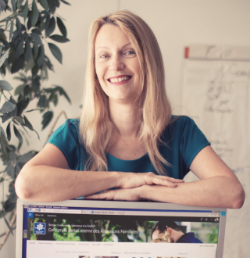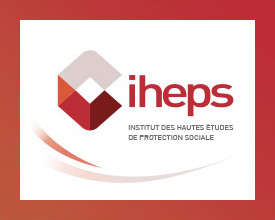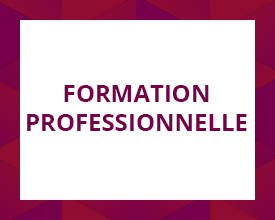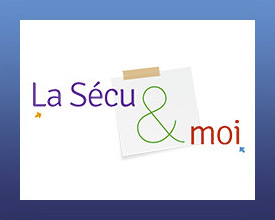24 June 2019
What digital transformation for the Cnaf ?
Digital technology has become an essential tool in everyday life, and has therefore naturally become an essential tool for social security organisations. For the family branch, this digital shift has taken the form of many tools and applications. It has also just started the migration to office 365.
Emmanuelle Maury, head of the human resources department and pilot of the internal Eden project, Karine Nerguararian, change support pilot – Internal digital transformation project and former student of EN3S (class of 47) and Sabrina Hélaine, director of the Eden programme, present us with the developments related to digital within the family branch.
The family branch has been moving towards digital technology for several years, with the introduction of a range of online tools and applications. What role does this digital transformation play in the Cnaf’s strategy ?
 Sabrina Hélaine: With more than 29 million monthly consultations of the beneficiary account on Caf.fr, 80% of the available procedures carried out online and 7.5 million downloads of the Caf-Mon Compte mobile application… the digital transformation of the Family Branch is now a reality!
Sabrina Hélaine: With more than 29 million monthly consultations of the beneficiary account on Caf.fr, 80% of the available procedures carried out online and 7.5 million downloads of the Caf-Mon Compte mobile application… the digital transformation of the Family Branch is now a reality!
While the Family Branch’s strategy aims to promote the use of digital technology and contribute to controlling the cost, it is accompanied by a strong focus on ease of use. The latest digital offer: a chatbot. It was generalized in April 2019 to guide the user and answer his most frequently asked questions.
The second structuring axis of our strategy is to ensure the accessibility of services, particularly to audiences furthest from digital, in line with the digital inclusion policy.
Finally, and this is the originality of the Family Branch’s approach, the digital strategy is built in an ecosystem by combining digital development and support for its three audiences: users, partners and collaborators.
The Cnaf wishes to integrate collaborative tools, such as office 365, into the managerial practices of the family branch. What impacts do you assess for organizations on a daily basis? What are their advantages ?

 Emmanuelle Maury and Karine Nerguararian: Digital transformation is changing the traditional organization of work in many ways. It is leading to a real explosion in teleworking. It makes it possible to rebuild or even create new professional collectives, based on new working methods that are more collaborative and participatory. It also leads to the design of new workspaces that are more open, more user-friendly, promoting exchange and cooperation.
Emmanuelle Maury and Karine Nerguararian: Digital transformation is changing the traditional organization of work in many ways. It is leading to a real explosion in teleworking. It makes it possible to rebuild or even create new professional collectives, based on new working methods that are more collaborative and participatory. It also leads to the design of new workspaces that are more open, more user-friendly, promoting exchange and cooperation.
In the end, the organization of work becomes more agile, structured in project mode, more open to an ecosystem, much more efficient, especially for disseminating innovations. The share of tools is important in this evolution, but it is above all a new mode of management and internal operation that allows it.
How does the shift to digital encourage social security organizations to review the way they operate internally? What are the managerial impacts of digital transformation within the family branch ?
Emmanuelle Maury and Karine Nerguararian: The transformation of the managerial model is an important consequence of the digital transformation. While the fundamentals of what makes a good manager remain the same – orientation/results and people development – managerial skills must evolve to integrate the characteristics of project management, remote management, but also community leadership.
The more information circulates, the more exchanges are encouraged between peers, within teams, the more the managerial posture must evolve towards a function of talent developer, orientation in action and sharing on meaning.
The collaborative management mode is based on the conviction that interaction and collaboration between employees are key to performance. Giving way to the collaborative means changing the paradigm with regard to daily operating methods. More specifically, we strive to empower employees while promoting initiative and autonomy.
As part of this digital transformation, Cnaf has chosen to train its employees with EN3S. Can you come back to this project in more detail? Why is it important for organizations to participate in this training ?
Emmanuelle Maury and Karine Nerguararian: To support the internal digital transformation process and the commitment to a stronger collaborative dynamic at the Branch level, the National Internal Digital Transformation Project was designed in partnership with EN3S. It is a training offer dedicated to managers in the Family branch and focused on the use of advanced collaborative skills.
This training is entitled “Integration of Office 365 collaborative tools into management practices” (link in french).
Lasting one day and organized as an intra-organization, the training focuses its learning on the daily life of a top manager and the main uses of advanced collaboration:
- To situate the uses in the context of the Family Branch;
- Understand the impact of these tools on managerial practices,
- Manipulate SharePoint, Teams and Yammer tools during the session
- Understand the operating dynamics with the new branch portal and the future corporate social network
- Understand the value of these tools and plan for a broader deployment within the organization.
This training therefore has both an operational dimension linked to the use of tools (as recommended by the branch) and a strategic dimension, to guide top managers in defining and implementing their managerial policies for the benefit of employees.





